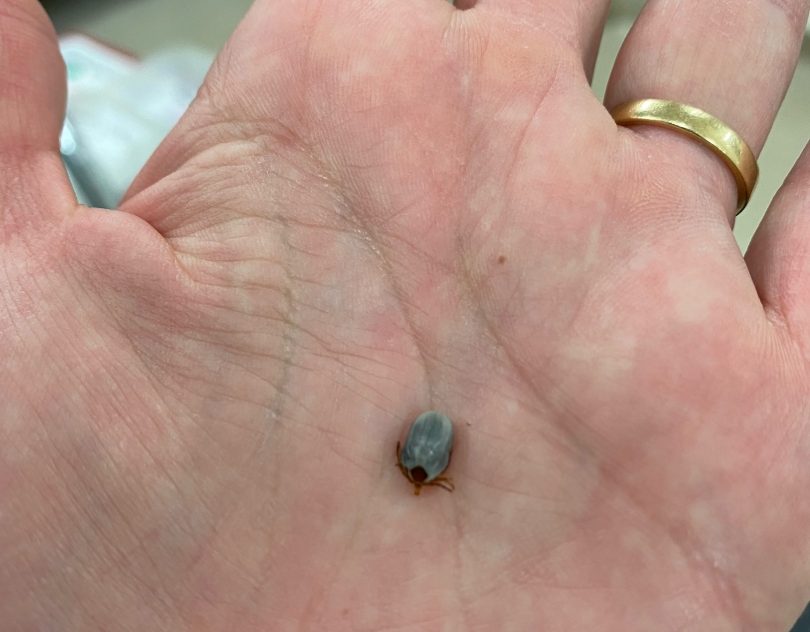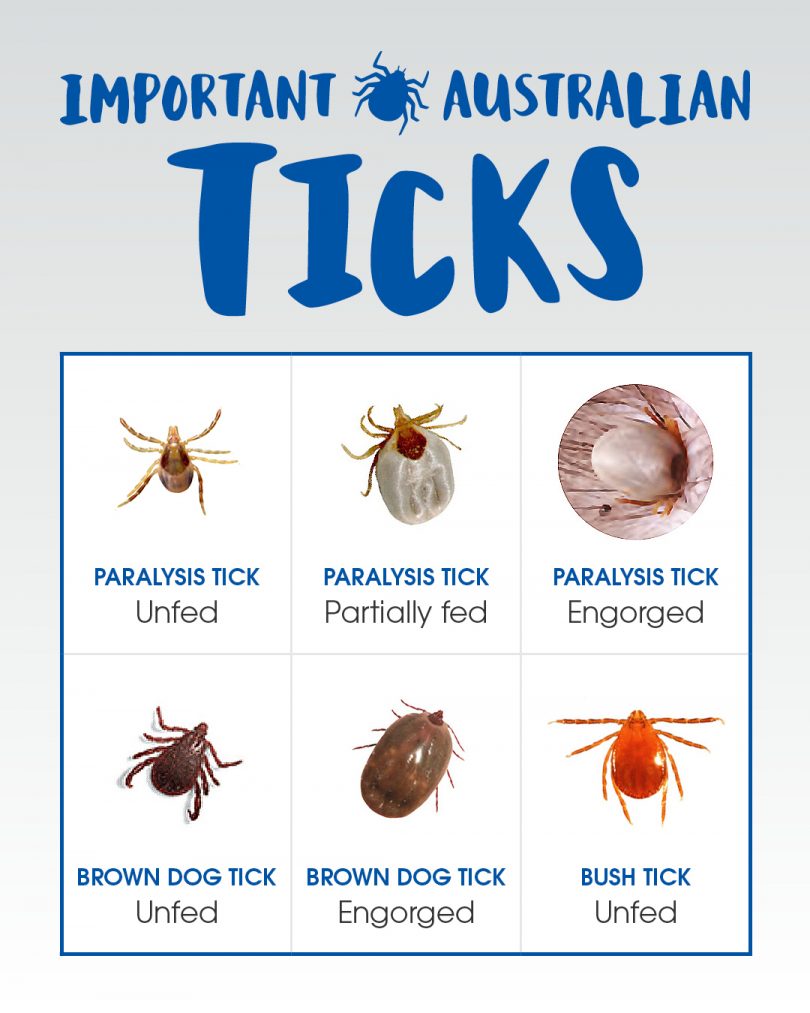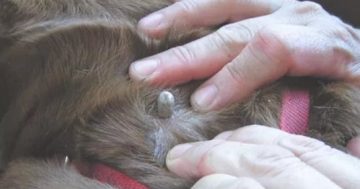
Puddleduck is encouraging dog owners to protect their pets against ticks. Photo: Bega and Cobargo Veterinary Hospitals.
Following recent rains and with the weather warming up, ticks are on the march once again.
As we head into summer, vets on the South Coast are seeing an increase in the number of pets, particularly dogs, presenting with paralysis tick toxicity.
Bega and Cobargo Veterinary Clinic operations manager Raelene Flower says ticks are out in force due to the ideal weather conditions this year.
“We are seeing larger numbers of affected pets this year than usual,” she said.
“We’re mainly seeing cases from along the coast between Eden to Bermagui, but we’ve also had cases from Bega and Tilba.”
READ ALSO: Drivers asked to rein in their speed and take care around horse-riders
Vets as far north as Milton have reported an increase in tick numbers.
Following the death of a dog last week, and many more requiring treatment, Ms Flower said it’s extremely important to ensure pets are on an effective paralysis tick prevention.
Owners must also read the packaging of tick prevention products very carefully.
“We have had some clients in with affected dogs who thought the product they purchased prevented paralysis tick, but they don’t,” Ms Flower explained.
“Products such as Bravecto or Nexgard are probably the best on the market currently.”

A paralysis tick removed from a dog this week. Photo: Bega and Cobargo Veterinary Hospitals.
People also need to remember that if they remove a live paralysis tick from their pet, they will not necessary get better.
“Paralysis ticks inject a toxin or poison into the host when they attach and feed,” Ms Flower said.
“Even if you remove the tick, that toxin is still in the body and will continue to cause damage.
“The animal may need a paralysis tick anti toxin which is administered at a veterinary hospital.
“Depending on how badly your pet is affected, it may also need a prolonged stay in hospital.”
She says prevention of tick paralysis is definitely cheaper than treatment.
Signs that your pet may have a paralysis tick include:
- Wobbly back legs or falling over when trying to walk.
- Drooling or dry retching (trying to vomit).
- Unable to walk or stand up.
- A hacking cough, funny bark or loud respiration.
- The eyes look glazed.
Ms Flower said the brown dog tick and bush tick are fairly safe, unless in huge numbers, by the paralysis tick is the one to look out for.
“If you think your pet has a paralysis tick make sure to have it seen at a vets as soon as possible,” she said.
It’s not just dogs and cats that feel the effects of tick poison, people can also have serious reactions including local and systemic infections, allergy, paralysis, autoimmune disease, post-infection fatigue and Australian multisystem disorder.
According to the NSW Health Emergency Care Institute, three types of ticks in Australia are known to transmit bacterial infections, however there is no evidence that Australian ticks transmit viral illnesses as they do in other parts of the world.
If working or walking in the bush, people are advised to use insect repellent containing DEET or Picaridin to prevent bites.
The institute advises removing ticks carefully with fine-tipped forceps by gripping the tick at is mouthpiece and pulling it straight out of the host’s skin.
Avoid squeezing or pulling the tick by the abdomen, increasing the risk of injecting more toxin or breaking the tick and leaving remnants of the head or mouth in the host’s skin.
Local reactions are the most common sign of tick bite in humans and resolve without treatment, however the longer the tick has been attached to the host the greater the increase in the risk of systemic illness.
According to NSW Health, tick borne diseases such as Australian Tick Typhus or ‘Spotted Fever’, tick paralysis and severe allergic reactions can pose a serious health threat.
Early symptoms of tick paralysis can include rashes, headache, fever, flu-like symptoms, tenderness of lymph nodes, unsteady gait, intolerance to bright light, increased weakness of the limbs and partial facial paralysis.
In some susceptible people, tick bites may cause a severe allergic reaction or anaphylactic shock, which can be life threatening. If swelling of the face and throat causes breathing difficulties, seek urgent medical attention.

Image: Bega and Cobargo Veterinary Hospitals.










